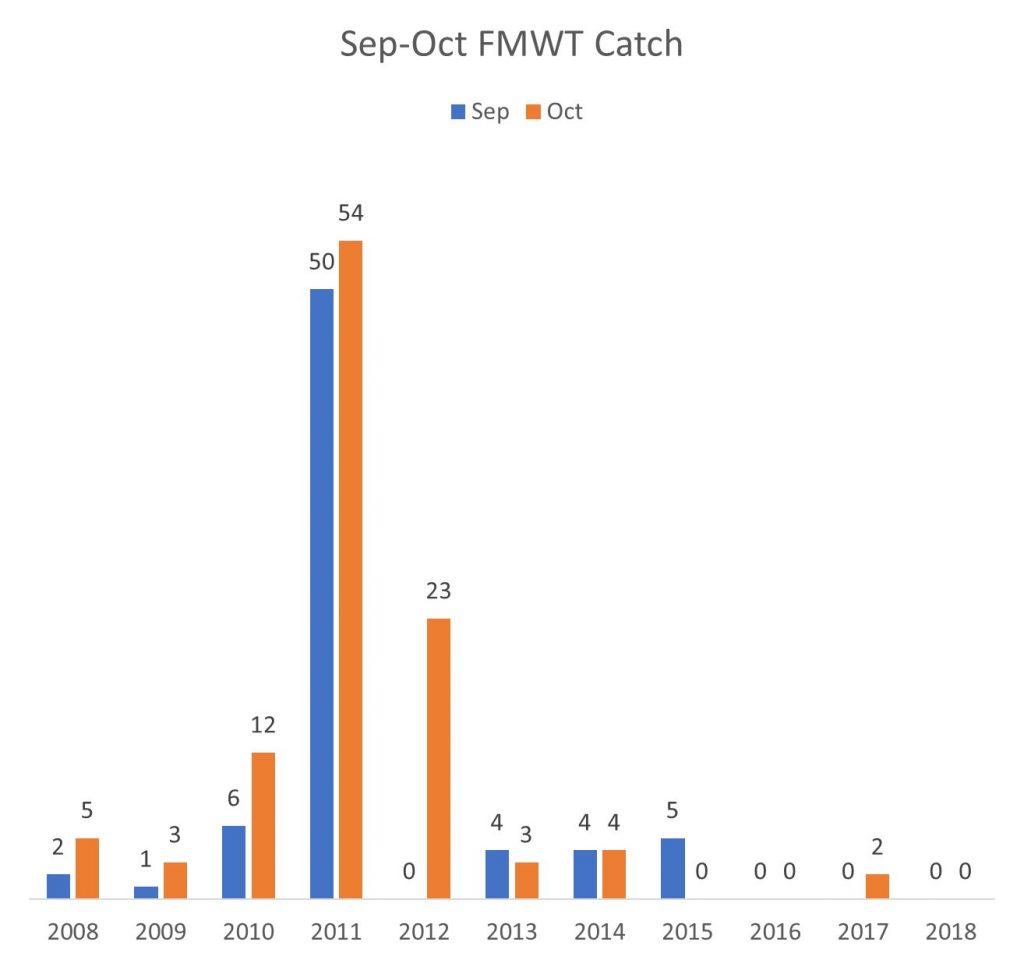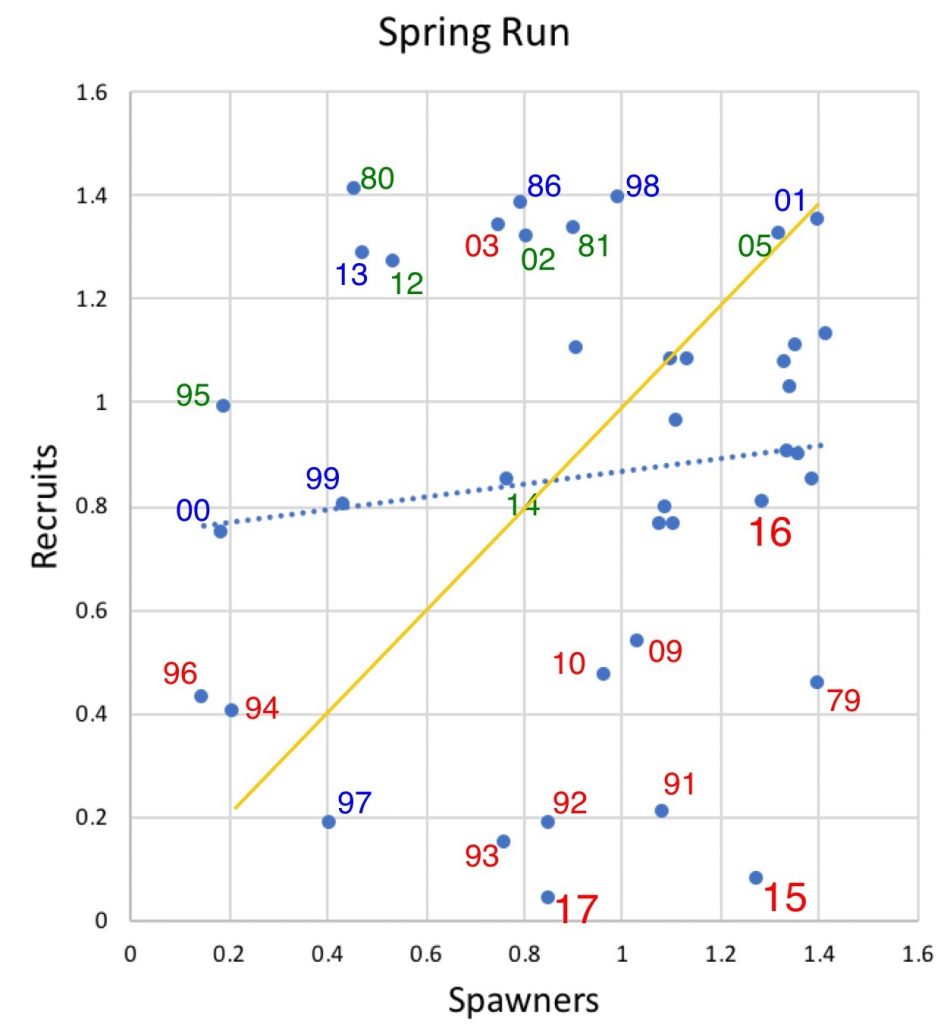In a July 2016 post I recommended a 500 EC (electroconductivity) salinity standard from July-to-mid-August for the western Delta. The longstanding Water Rights Decision 1641 standard includes this only in Wet years. It should apply in all year types unless south Delta exports are at minimum levels.
In summer 2018, a Below Normal, subnormal snowmelt year, Jersey Point salinity was kept near 500 EC through early August (Figure 1) instead of the allowed 740 EC. Was this an adaptive management experiment? If so what benefits were derived from the experiment?
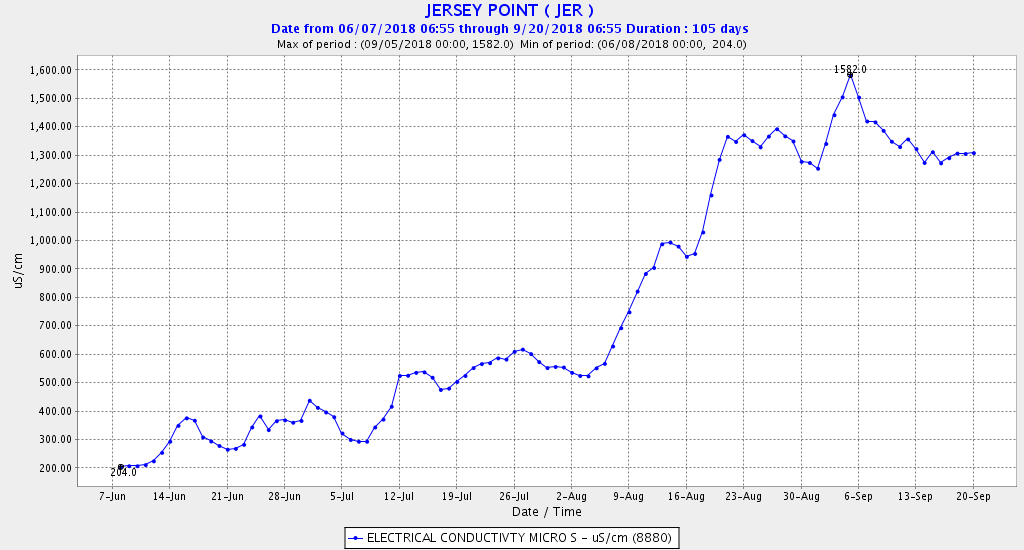
Figure 1. Jersey Point salinity (EC) remained near 500 EC in early summer 2018. The applicable standard was 740 EC 14-day average through August 15.
Benefit #1:
The water temperature in the west Delta in 2018 was kept near 73°F or below (Figure 2), a good thing. In 2016, the previous Below Normal year, EC was allowed above 500 EC (Figure 3) per the existing standard. Water temperature exceeded 73°F to near 75°F (Figure 4), a bad thing, when EC exceeded 500. The reason for the higher early summer 2016 EC and warmer water temperatures was low Delta outflow (Figure 5). Outflow in 2016 was about 7000 cfs, but needed to be near 8000-9000 cfs. In 2018, outflow in late June was 7500-7900 cfs (Figure 6), in part due to relatively low early summer Delta exports (Figure 7) compared with 2016 (Figure 8).
Other Benefits:
It is really too bad that we can no longer look to Delta smelt for response to adaptive management. But I suspect positive response to the 2018 “experiment” occurred in survival of other juvenile Delta fish (e.g., striped bass), shrimp, zooplankton, and phytoplankton. When 2018 data become available, the comparison with 2016 and prior years can be made.
Conclusion:
The salinity standard for the west Delta at Jersey Point and Emmaton should be 500 EC daily average unless south Delta exports are restricted to minimum health and safety levels. The standard should be year-round in all year types. Delta exports should be restricted to the minimum unless the salinity standard is met.
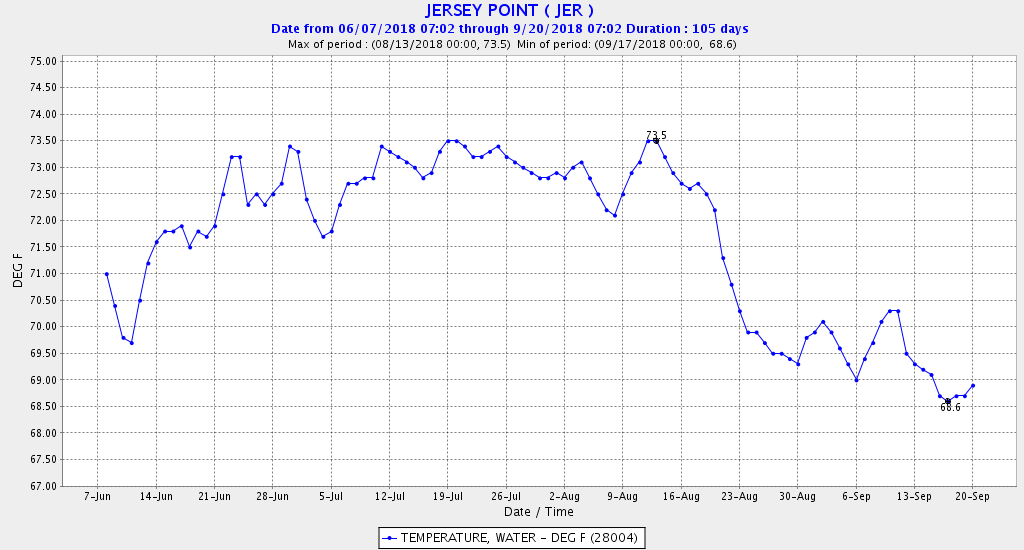
Figure 2. Water temperature at Jersey Point in west Delta summer 2018.
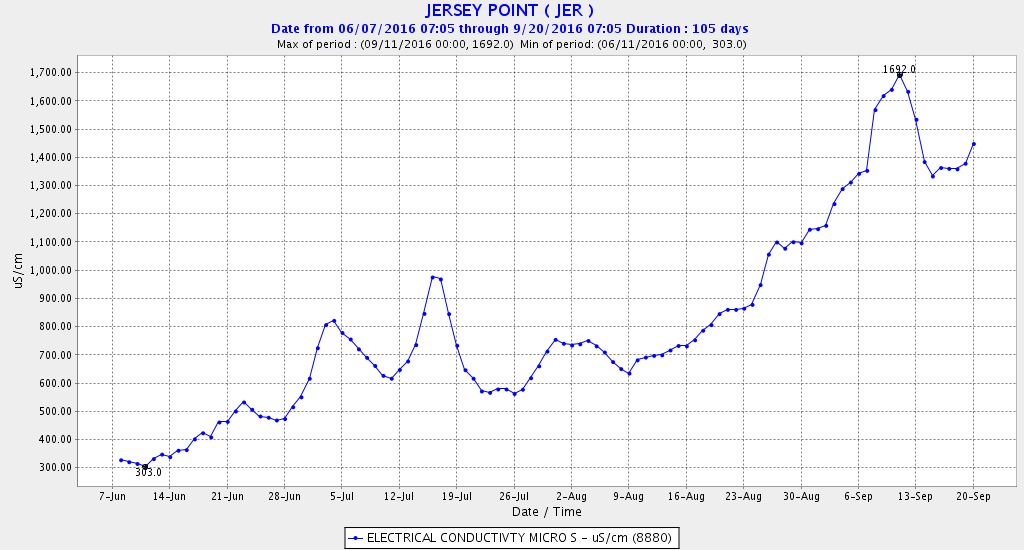
Figure 3. Jersey Point salinity EC summer 2016. Standard was 740 EC 14-day average through August 15.

Figure 4. Water temperature at Jersey Point in west Delta summer 2016.
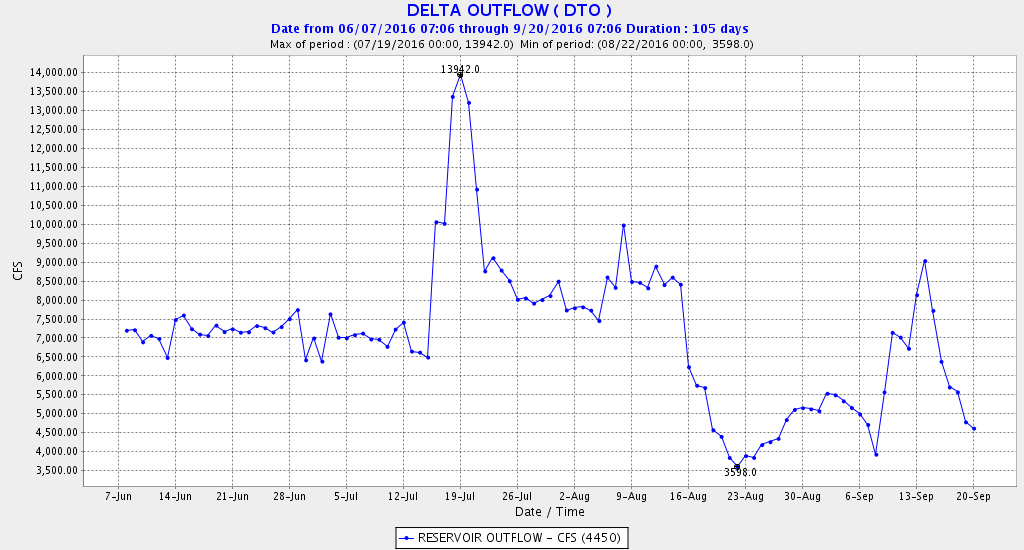
Figure 5. Delta outflow in summer 2016.

Figure 6. Delta outflow in summer 2018.
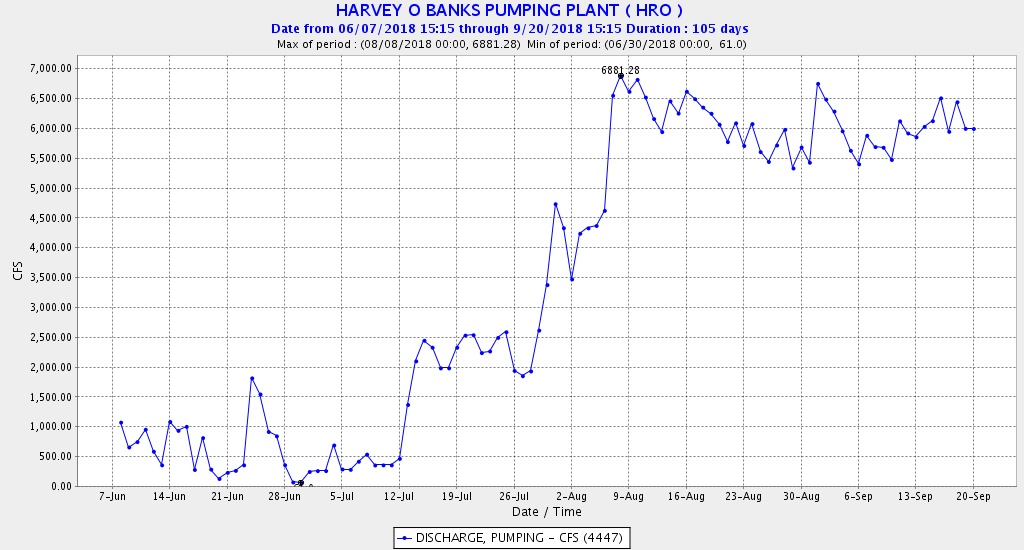
Figure 7. State exports from south Delta summer 2018.

Figure 8. State exports from south Delta summer 2016.

